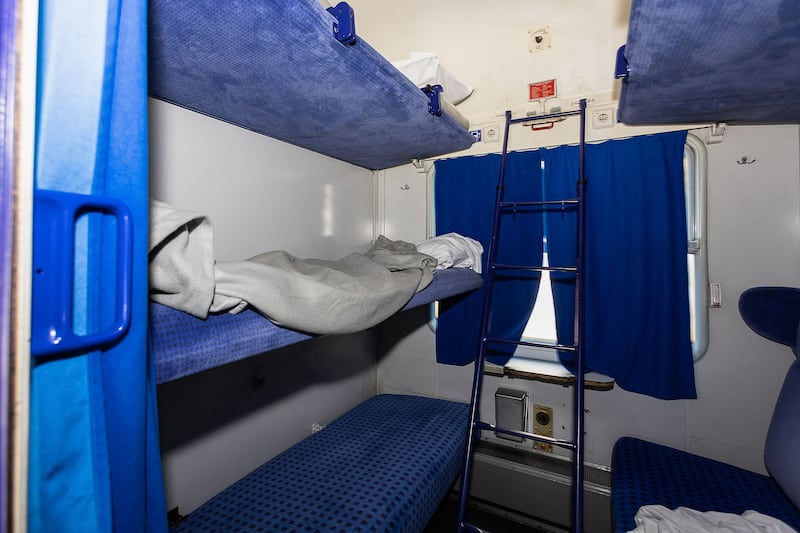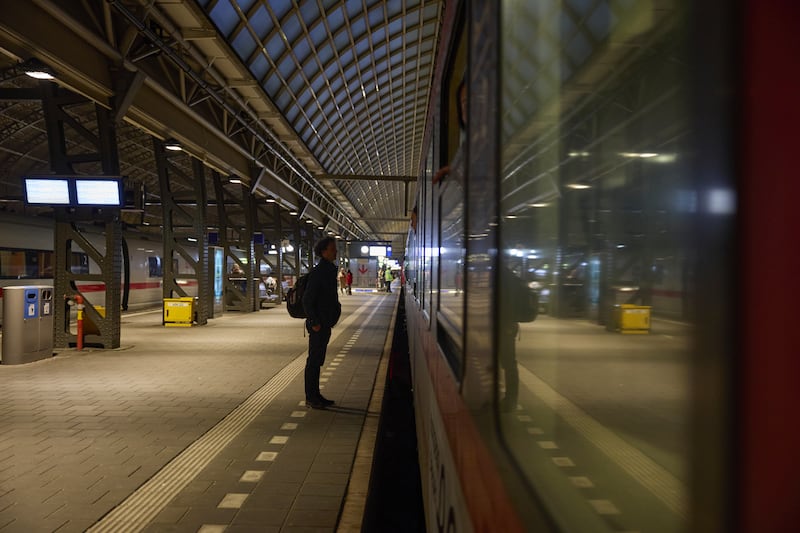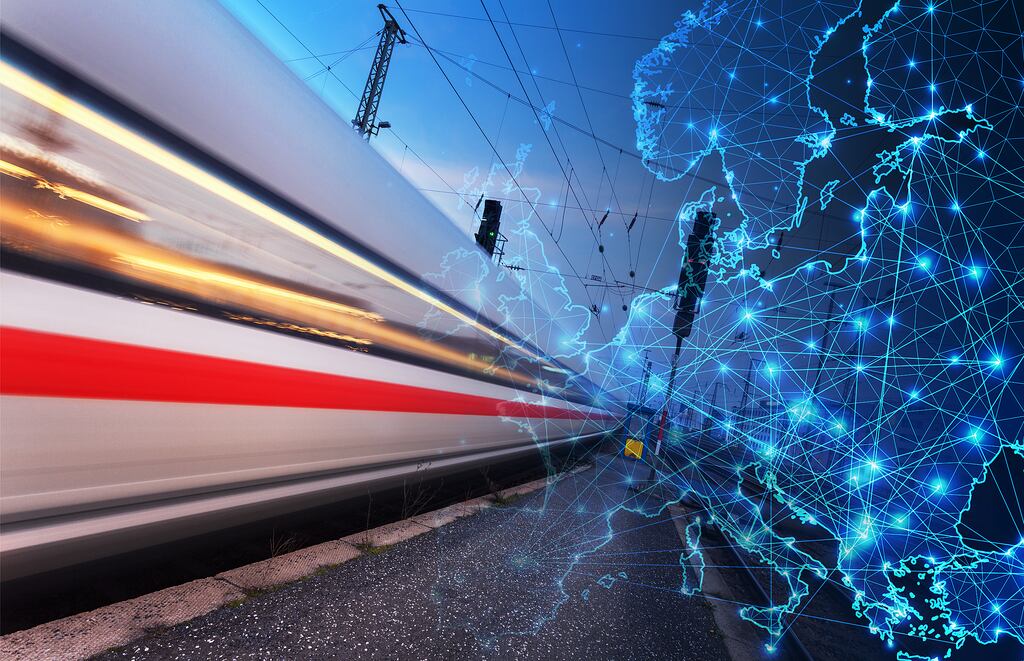“The thing I like about taking the train,” the young boy announced on a recent trip to Italy, “is that the journey takes as long as it should.”
Simple yet obvious, that boy’s wisdom pops into my head every time I board a long-distance train trip to Vienna, Warsaw or – last week – the sleeper train from Berlin to Stockholm.
As an island native without a driving licence, cross-border train travel around Europe never loses its thrill. Even more so now. The Continent is at a travel tipping point with rising flight costs, the hot hell of airports and a new generation of climate-conscious travellers.
After a slow build in the last decade, a rail revolution is gaining momentum – just in time for the bicentenary of continental train travel in 1827. For many, the most obvious sign of the rail revival is the return of the European sleeper train.
READ MORE
My first experience of sleepers came in their dying days of the early 2000s, just as budget airlines were stealing their customers. Aboard a night train to Minsk, my sweaty cabin mate’s last words before he fell into a snoring sleep: “They pump in knock-out gas under the door and then force the lock open, but at least you don’t even notice them robbing you.”

We had no visitors that night but I still felt robbed: this was a long way from the Orient Express, immortalised by Agatha Christie as the big sleeper.
And so two weeks ago, with trepidation, I booked a place on the Berlin-Stockholm sleeper, recently revived by Swedish railways (SJ) after 25 years.
At €220 one-way for ticket and bed in a two-person cabin, it wasn’t cheap. That said, I was booking just a week in advance, I noticed a flight was even more expensive and, by sleeping through most of the 1,400km rail journey, I’d save on a hotel stay in Stockholm.
At 6.30pm on Wednesday of last week, the blue SJ sleeper to Stockholm – via Hamburg, Copenhagen and Malmö – glided up to the platform in Berlin.
Within a minute I located my two-person cabin, noted with relief the wash-hand basin and the (made) beds which, at two metres long, had just enough space for me (195cm) to sleep in without cramping.
The cabins were as warm inside as the baking 28 degrees outside and, a few doors down, a large, sweating man in a Rolling Stones 1975 tour T-shirt began to panic: the cabin was too hot for him, too cramped and two towels were not enough.
“Where are the towels?” he wailed loudly. “This is absolute hell.”
As we rolled at a steady 90km/h through the flat landscape of Brandenburg, and then the rolling landscape of Mecklenburg and Holstein, things began to calm down. After two hours the train temperature stabilised and so did the mood of Mike from Florida in his Rolling Stones T-shirt, particularly after I bought him a cool Flensburger beer.
We parted company for the night at Hamburg. When my cabin mate didn’t show up, I had my choice of beds and slept well. Just after 9am, after a simple breakfast of coffee with a roll, I stepped off on to the platform in Stockholm central and headed to a favourite local cafe. Some 10 days on, I’m still buzzing from the frazzle-free nature of the trip.
The SJ night service between Berlin and Stockholm runs 300 days a year and is particularly popular in the May-September peak season. In the quieter months it still runs at three-quarters capacity, supported financially by a Swedish government climate subsidy. The numbers speak for themselves: flying from Stockholm to Hamburg results in about 250kg of carbon dioxide emissions per passenger, about 10 times the emissions via electric train – just 26kg. No wonder then that Swedish railways (SJ) are expanding their sleeper network.
“We are working now with Germany’s Deutsche Bahn (DB) and Danish railways to open a night train line from Oslo, through Gothenburg, Malmö and Copenhagen to Hamburg in two years,” said SJ spokesman Peter Kraméus. The long lead time is needed to co-ordinate timetables and find rolling stock that meets Europe’s differing standards that hinder greater integration of Continental railways. Trains from Germany via Denmark to Sweden, said Kraméus, needed to handle three different kinds of electricity supply.

“When you look at Europe’s history, railways were built out of military defence perspective,” he said. “That is why every country chose their own system, and we still have a little bit of that thinking in the national rail companies.”
National borders and state monopoly thinking still thrive in the European rail market, say rail analysts. While private rail operators have sprang up to transform rail travel in Spain and Italy, new arrivals elsewhere struggle with high track-access charges and the high upfront costs of procuring rolling stock.
[ All aboard for a great day out: The best railway attractions around IrelandOpens in new window ]
[ A flight-free winter sun holiday through Spain and PortugalOpens in new window ]
Europe’s newest sleeper connection, which launched last May, links Berlin and Brussels. Among the early passengers was Berlin-based musician Mark Andrews. A committed rail enthusiast, the 29 year old thinks the €79 ticket for a simple berth was good value. But his return rail journeys to the UK never cost less than €300.
“Young people are up for travelling by rail because of the climate crisis but the cost is off-putting,” he said. “It’s a contradiction that the people who care most about the climate can’t afford to take the train.”
As well as cost is the complicated business of cross-border tickets. Efforts in the 1990s to liberalise markets saw national operators create bespoke booking systems that, even today, struggle to communicate with each other.
German Green MEP Anna Deparnay-Grunenberg, a rail enthusiast, is hoping for change in September when the European Commission presents its proposals for cross-border ticketing. Adding to the pressure, she said, was a warning from Germany’s cartel office in June to DB, the country’s state rail operator, to make its mobility data available to other platforms.

“For ages I’ve been calling for cross-border ticketing, so that we can finally travel in a pan-European, climate-neutral manner,” said Ms Deparnay-Grunenberg. “In addition, I am currently fighting for more transparency, so that the climate impact of the respective travel route must be shown on all such platforms.”
Given the climate benefits – rail transport represents just 0.5 per cent of total EU greenhouse gas emissions – leading rail companies have begun a new push to win over politicians. Last week they presented a proposal to triple high-speed rail travel by 2050 through a new, post-national high-speed rail network – financed directly by Brussels. Reframing railways as critical European infrastructure – not a national political plaything – will, they say, secure European economic growth and the EU’s Green Deal strategy to reduce transport-related carbon emissions by 90 per cent by 2050.
“Once the infrastructure is in place, millions of people on the Continent will benefit from attractive connections and faster travel times,” said Michael Peterson, board member for long-distance passenger transport at German state operator, DB.
That is the future but, in the present, many European rail experts see Germany’s DB – after years of mismanagement – as the Achilles heel of the Continent’s rail revival.
The German operator acknowledges huge reliability problems – blaming its short-sighted politician owners – but insists a paradigm shift is under way. As well as a large track works programme, a €12 billion procurement programme means 90 new high-speed trains will be delivered in the next five years, bringing the German ICE fleet to 450.
With its focus on daytime travel, DB says its international rail traffic is up a third in the past seven years and the company now operates 250 cross-border routes, carrying 55,000 passengers daily.
Meanwhile, Austrian state operator ÖBB has positioned itself as master of Europe’s sleeper train revival. Compared with pre-pandemic levels, ÖBB’s long-distance rail traffic is already up 20 per cent, largely thanks to its thriving Nightjet sleeper network linking 25 European cities to Vienna including Paris, Hamburg and Milan. Last year ÖBB’s Nightjet network carried 1.5 million passengers while ÖBB hopes its 33 brand new sleeper trains, due in December, will be a game-changer.
“This is a rail boom the likes of which we have never seen before, we simply cannot keep up with demand,” said Bernhard Rieder, ÖBB spokesman.
So how do long-term rail watchers view the current developments: revolution or flash in the pan? Mark Smith, behind the popular Man in Seat 61 website, sees slow but steady progress to transform national rail networks into an interconnected European infrastructure.
“Train travel is no longer a specialist niche for rail enthusiasts,” he said, “but for all people fed up with flying who want to cut their carbon footprint.”
And where is Ireland in all this, with its diesel trains and creaking rail network? A new All-Island Strategic Rail Review, due to come before Cabinet later this month, is expected to back a new freight link from Ballina to Rosslare.
The Wexford port’s post-Brexit ferry boom to Cherbourg is already a hit with Irish hauliers and car-owning holidaymakers. But is there room for improvement? Asked about extending the popular sail-rail deal beyond the UK for travellers without cars, a Department of Transport spokesman said: “Ireland and France are working to launch a sail-rail product later this summer that combines French and Irish trains with a ferry ticket.”
Perhaps that promise – of sustainable and simple car-free travel at a reasonable price – will open a side door and allow Irish people climb aboard Europe’s railway revolution.
Rail resources
- Download Deutsche Bahn (DB) navigator app, and enjoy checking out all known Continental rail connections from Uppsala to Ulm and Bordeaux to Bydgoszcz.
- Seat61.com offers detailed travel and ticket guides across Europe
- interrail.eu sells European travel passes for all ages, time-frames and budgets.



















